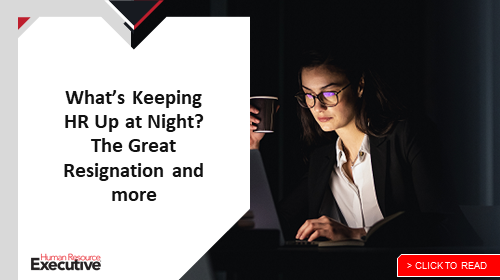Fueled by the pandemic, KPMG has beefed up its employee listening strategies over the past year-and-a-half, regularly asking its workers for feedback, as well as how they are feeling and what they need help with. Starting in 2020, the accounting firm began sending workers pulse surveys, conducting focus groups and hosting conversations to hear about their biggest struggles and what company leaders could do.
Most recently, when employees were asked about what they wanted and needed, the result was clear: They wanted more money in their pockets.
As a result, KPMG last fall announced several enviable benefits and programs that helped improve employees’ financial situations: It handed out raises; it introduced an automatic 6%-8% firm contribution to retirement accounts—even if workers don’t contribute themselves; it offered more frequent financial rewards for excellent work; and it said it would reduce employee healthcare premiums by 10% in 2022, with no change in benefit levels.
Not only that, but the firm last month announced a nearly $160 million additional investment in salary increases across the board for all KPMG professionals.
“We’ve always been in a very aggressive labor market, but the pace of change is more significant than we’ve ever experienced,” Darren Burton, CHRO KPMG
“We’ve always been in a very aggressive labor market, but the pace of change is more significant than we’ve ever experienced,” says Darren Burton, the firm’s chief people officer and a keynote speaker at HRE’s upcoming Health & Benefits Leadership Conference in Las Vegas. (Register here.) “When you take an approach of your total rewards, it’s all about balancing that portfolio and putting dollars where people value them most. If you take that approach and pay attention to what really matters, [employees’] satisfaction goes way up because you’re giving them what they’re asking for and what’s most relevant in the marketplace.”
KPMG’s strategy of focusing on employee needs while putting more money in their wallets is one being deployed by several employers as they navigate a trifecta of concerns—COVID-19, the Great Resignation and record inflation—and in the process try to keep and attract talent.
As COVID-19 challenges affect everything—public health, burnout, childcare and family responsibilities, and a renewed focus on work-life balance—a record number of employees are leaving their jobs. Meanwhile, cost of living is growing at the fastest rate in more than four decades: Consumer prices soared in January by 7.5% from the year before, according to the latest Consumer Price Index.
 “Employers are trying to do whatever they can to retain and attract employees in this tough market. Compensation ceilings are looser than they’ve been in years, and benefits that were once considered superfluous five years ago are now being integrated into the mix,” says Julie Stich, vice president of content for the International Foundation of Employee Benefit Plans, a nonpartisan group that counts more than 8,200 organizations and 32,000 individuals as members. “Line managers and executives are listening to employees—whether it’s through town halls, stay interviews or more data-driven approaches—to understand what employees’ key issues are.”
“Employers are trying to do whatever they can to retain and attract employees in this tough market. Compensation ceilings are looser than they’ve been in years, and benefits that were once considered superfluous five years ago are now being integrated into the mix,” says Julie Stich, vice president of content for the International Foundation of Employee Benefit Plans, a nonpartisan group that counts more than 8,200 organizations and 32,000 individuals as members. “Line managers and executives are listening to employees—whether it’s through town halls, stay interviews or more data-driven approaches—to understand what employees’ key issues are.”
These efforts are all causing employers to more aggressively reevaluate their compensation and benefits packages—especially offerings that put more money in workers’ bank accounts and give employees a concrete and immediate way to feel valued and supported. An increasing number of company leaders realize that if they don’t do so, they’ll watch talent walk out the door.
“We’re in a candidate-driven market. There are more job openings than there are people to fill them,” says Stephanie Naznitsky, an executive director with human resource consulting firm Robert Half. “With the rise in cost of living, workers know they can go out into the market to find other opportunities that would help better their situation and offset some of the personal living expenses that have increased in recent months.”
Compensation changes
According to a Willis Towers Watson survey of more than 1,000 companies conducted during October and November, about a third of companies boosted their salary increase projections from earlier in 2021. Companies are now budgeting an overall increase of 3.4% in 2022, compared with the average 3% increase they had budgeted in June 2021. Employers gave workers an average pay increase of 2.8% in 2021.
Though those increases are higher than in previous years, smart employers will likely go further to keep up with cost-of-living increases and to sway workers to stay. A 3% raise doesn’t cover the cost-of-living increases, and it alone won’t entice workers to stay when they can go elsewhere for a salary hike, experts contend.
Bigger pay raises are on the table, often combined with bonuses, equity, stipends, recognition enhancements and more. Sign-on bonuses increased to 84% from 71% in 2021, spot bonuses increased to 73% from 64% and retention bonuses increased to 65% from 55%, according to a recent WorldatWork survey of more than 1,000 organizations.
See also: Beyond the Great Resignation, 7 trends that will shape work in 2022
“There’s a great reprioritization of work, rewards and careers underway, and it’s putting significant pressure on compensation programs for many employers,” says Catherine Hartmann, North America rewards practice leader at Willis Towers Watson.
Roughly 74% of companies cited the tight labor market as a reason to increase their budgeting for raises, according to the Willis Towers Watson survey. “Employers are looking to recognize high performers or stand-out candidates with an immediate benefit—and that often equates to more money in pocket,” Stich says. “Until the job market settles, this trend will stay.”
While salary boosts and bonuses are a desired—and needed—approach, on their own, they are not enough to solve retention and attraction challenges. Doing that also takes a comprehensive total rewards strategy that looks at more generous benefits, experts say.
Better benefits
 Providing more generous 401(k) contributions or covering or reducing the cost of healthcare premiums, as KPMG did, are certainly good ideas that make a big financial impact—and those trends are being embraced by a number of firms.
Providing more generous 401(k) contributions or covering or reducing the cost of healthcare premiums, as KPMG did, are certainly good ideas that make a big financial impact—and those trends are being embraced by a number of firms.
Meta, the parent company of Facebook, increased its 401(k) match to a dollar for every dollar its employees contribute, up to $10,250 this year and $13,500 for those 50 and older. That’s up from a prior match of 50% of participant contributions up to 7% of pay. Boeing increased its matching contribution, now matching dollar-for-dollar the first 10% of base and incentive pay that non-union employees contribute to their 401(k) accounts. Previously, the aerospace giant matched 75 cents on the dollar for up to 8% of base pay an employee contributed.
Sweetening retirement savings is an increasingly popular strategy, especially in a tight labor market. Data last fall from Callan found about 16% of large and midsize employers plan to increase their 401(k) contributions or reinstate a previously suspended match in 2022, while another 8% said they are considering such a move. That 24% combined total is a big increase compared to 2021 when Callan found a combined total of only about 12% took similar action.
It’s a smart approach: Employees are asking for more monetary support from their employer—especially since COVID-19 has left many workers in a more vulnerable financial position than they were pre-pandemic. Health concerns and job security continue to take their toll on many Americans, while others have lost jobs, had to miss work because of COVID infections or saw their investments and 401(k) balances take significant tumbles. A recent survey from Betterment, an investment advisory firm, found that financial benefits are now a top priority for employees, above in-office perks and vacation time. 401(k)s and matching programs remain the most highly sought-after financial benefits, the survey of 1,000 employees finds.
“Anyone will tell you that any good continuous listening strategy, the foundation of it is ensuring that you’re following up with what you’ve heard ,” Darren Burton, CHRO KPMG
For KPMG, reevaluating its retirement plan spurred “tremendous” feedback from its employees, especially since employees specifically asked for upfront cash in their post-career savings. “Anyone will tell you that any good continuous listening strategy, the foundation of it is ensuring that you’re following up with what you’ve heard,” KPMG’s Burton says. “And that’s exactly what we did. All of these major total rewards changes were based on what our people were telling us related to their challenges based on [COVID-19].”
“It’s market-leading,” Burton says of the firm’s updated retirement plan.
Retirement, of course, is only one piece of the financial wellness puzzle. Other employers are helping employees pad their emergency savings with savings programs, financial wellness programs and a focus on short-term financial support in addition to longer-term initiatives, like a more generous retirement plan.
Targeting employees’ financial health is a good strategy for attracting talent and one that is increasing in importance, especially with the confluence of events happening in the marketplace, says Timothy Flacke, co-founder and executive director of Commonwealth, a Boston-based financial nonprofit.
“There are some employers who believe that turnover is inevitable, and they just sort of plan for it. And that’s a real missed opportunity,” says Flacke, who will be speaking about financial health strategies at HRE’s Health & Benefits Leadership Conference. “There is truly an opportunity for a set of tools, interventions and benefits that are very focused on short-term financial insecurity.”
Related: Biggest financial health opportunity? Focusing on short-term help
 Other creative benefit offerings that help offset costs are another consideration for employers, and a trend that will likely pick up steam into the year as the hot job market shows no sign of abating. Stipends for wellness or for work-from-home accommodations have become a standard; employers like Twitter and Google have handed out cash so employees can pick out a new chair, a desk or office supplies as remote work becomes the norm.
Other creative benefit offerings that help offset costs are another consideration for employers, and a trend that will likely pick up steam into the year as the hot job market shows no sign of abating. Stipends for wellness or for work-from-home accommodations have become a standard; employers like Twitter and Google have handed out cash so employees can pick out a new chair, a desk or office supplies as remote work becomes the norm.
There also are benefit offerings that help offset costs for employees like student loan assistance, tuition reimbursement, daycare subsidies or fertility benefits—offerings that can directly help an employee’s pocketbook. Those investments usually pay off for organizations, IFEBP’s Stich says.
“The return on attracting and retaining key employees can quickly outweigh any utilization costs,” she explains. “As always, the importance of communication can’t be understated. Employers need to stress the value of the benefits they provide to their employees.”
Flexibility and offering remote work can also combat the rising cost of living and put more money in the pocket of workers, Robert Half’s Naznitsky says, as employees can be more in control of moving away from expensive cities, for instance, or can cut down on commuting to save on gas or other transportation expenses. “If you can help in those areas, maybe you are saving your employees from a stressful commute and commuting costs, or providing discounts that can help with other expenses,” she says.
Embracing authenticity
 Although providing immediate help is on the minds of employers in the battle for talent, experts say attention needs to transcend a short-term focus.
Although providing immediate help is on the minds of employers in the battle for talent, experts say attention needs to transcend a short-term focus.
What’s important is that employers authentically want to help employees and provide them with purpose, value and support. “It’s more than dollars and cents,” Flacke says. “If you send a message that’s it all about the bottom line, that’s what people will expect. But if you authentically send a message that you’re here for a purpose and you’re looking to help, that’s a different message.”
Stich agrees, saying purely financial and immediate benefits won’t have a long-lasting impact unless they are coming from a genuine place.
“What is implemented now must be considered in the long-term,” she says. “We know that over time, more money alone isn’t a strong retention strategy. Employers need to consider longer-term actions and incentives that foster an enriching company culture.”
The post From better benefits to higher pay, employers are upping the ante on talent appeared first on HR Executive.